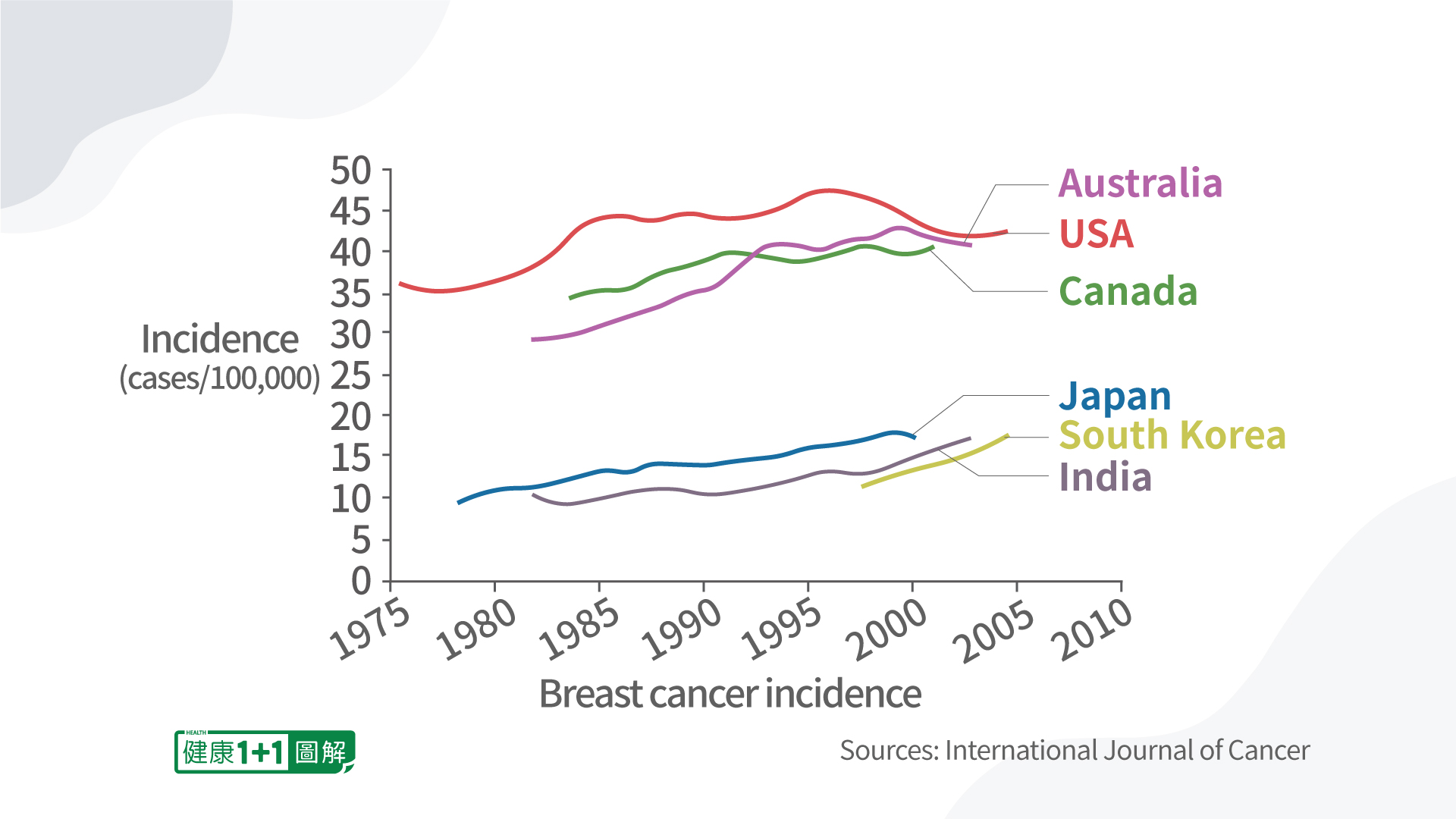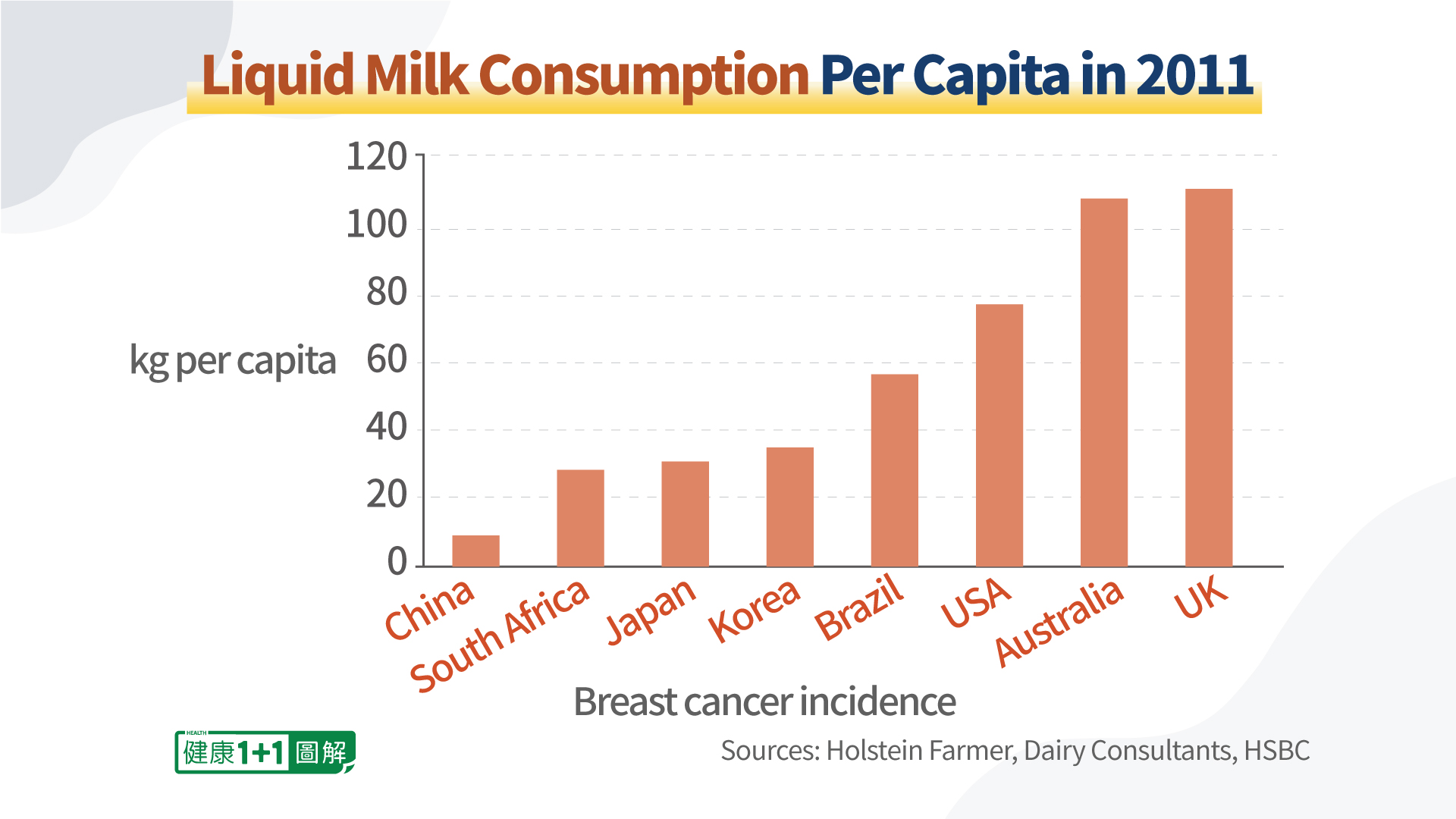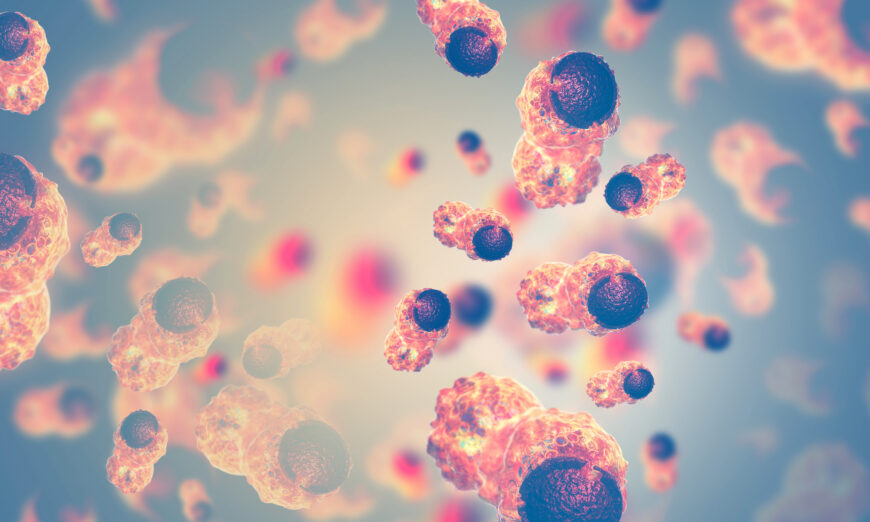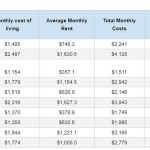![]() Cancer is a type of disease in which some abnormal or damaged cells of the human body grow uncontrollably, multiply, and spread. These cells may form lumps of tissue called tumors, and in the case of cancerous (malignant) tumors, they travel to other parts of the body to form new tumors.
Cancer is a type of disease in which some abnormal or damaged cells of the human body grow uncontrollably, multiply, and spread. These cells may form lumps of tissue called tumors, and in the case of cancerous (malignant) tumors, they travel to other parts of the body to form new tumors.
The first ever documented case of cancer took place in ancient Egypt in 1500 B.C. It’s possible that humans’ fight against cancer is as long as the history of human civilization itself. Despite generations of efforts, thousands of years have passed, and we still haven’t found a cure for cancer.
However, new medical and scientific discoveries and developments might bring about new treatment methods to prevent or eliminate cancer. For instance, scientists may have discovered a way to prevent at least half of all cancer cases.
Discovery of a Key Trigger of Cancer
In 2019, in an interview with the Horizon magazine, virologist and Nobel laureate Professor Harald zur Hausen, winner of the 2008 Nobel Prize in Physiology or Medicine for his discovery of the role of papilloma viruses, stated that humans have a good chance of drastically reducing the incidence of cancers.
He further explained that according to our current understanding of different types of cancer, in about 20 percent of cancer cases, infections are involved.
According to Professor zur Hausen, there’s evidence that at least 30 percent more human cancers are also linked to infectious events. Therefore, by eliminating infections, at least half of the human cancers can be prevented.
Just several years ago, in 2015, Professor zur Hausen and his wife Professor Ethel-Michele de Villiers, who both worked at the German Cancer Research Center, discovered a new form of infectious agents called “Bovine Meat and Milk Factors” (BMMFs) in dairy products and bovine sera. These BMMFs are active in human cells, and replicate and produce proteins.
The Cancers Related to Infections
Some types of human cancer are caused by viral, bacterial, or parasitic infections, which are causative agents in this regard. For instance, Hepatitis B and C virus infections may cause liver cancer; Helicobacter pylori infections may lead to ulcers and possibly gastric cancer; parasitic infections of the vascular system in the bladder and liver may eventually lead to bladder and liver cancers; and HPV infections may lead to cervical cancer.
According to the calculations performed by de Villiers’s team, the global cancer incidence caused by infections is somewhere between 20 percent and 21 percent.
Infectious agents contribute to cancers by both direct and indirect interactions. The cancers induced by direct carcinogens (e.g. papilloma viruses, EBV, and retroviruses) differ from those induced by indirect carcinogens (e.g. Helicobacter pylori and parasitic infections). Cancers linked to direct carcinogens commonly increase under immunosuppression, whereas the cancer risk by indirect carcinogens would decrease. The group of cancers induced by indirect carcinogens include colon, breast, and prostate cancers.
What Are Bovine Meat and Milk Factors (BMMFs)?
By analyzing epidemiological data, Professors zur Hausen and de Villiers and their team have discovered a link between the consumption of dairy cattle’s meat and milk and several types of cancer. Specifically, it was found that countries consuming red meat mostly from Eurasian dairy cattle origins have high incidences of breast and colon cancers, with the exception of Mongolia.
The team’s studies in Mongolia support the suspicion that species-specific factors should be more important, possibly linked to specific breeds of cattle.
Cow milk (bovine milk) and beef (bovine meat) have always been an important part of human diet, and they have brought undoubted health benefits to the human race for millennia. Besides the obvious negative effects of lactose intolerance and dairy allergy, scientists have also identified more than 100 different types of viruses or infectious DNA molecules in bovine meat and milk that can potentially cause human cancers. And they are called the “Bovine Meat and Milk Factors” (BMMFs).
BMMFs can be found in beef, milk, and other dairy products, including butter, yogurt, yogurt drinks, and cheese.

Important known facts about the BMMFs:
- They share characteristics with viruses and bacterial plasmids
- They are adapted to genetic activity and replication in certain cattle and human cells
- The majority of the initial isolates originated from sera or dairy products of Eurasian dairy cattle
- Their DNA doesn’t persist in cancer cells, but it stays in lamina propria cells (including periglandular stroma cells and in some macrophages)
- They produce a protein product called Rep, which can multiply in cells
BMMFs are biologically active in human cells and are proposed to induce chronic inflammation (proven to promote cancers) in precancerous tissues, which leads to increased free radical (reactive oxygen species) formation and increased mutagenesis at the respective sites.
Colon, Breast, and Prostate Cancers
According to the American Cancer Society, as of 2022, colorectal cancer (colon cancer for short) is the third leading cause of cancer-related deaths in both American men and in women.
According to epidemiological evidence, not every cattle species’ beef and milk can lead to colon cancer. For example, consumption of Zebu (from humped cattle) and Yak meat seems to be able to substantially reduce the risk of colon cancer. This may explain the low incidence of colon cancer in Mongolia.
On the contrary, the consumption of meat and milk from dairy cattle (Eurasian taurines) seems to increase the risk for colon cancer, because in countries with high incidences of this cancer, dairy cattle are the most prevalent. A current working hypothesis is that Eurasian dairy cattle might carry and transmit a factor that’s involved in colon cancer etiology. This factor is an infectious agent that contributes to malignant conversion of colon cells, due to the selective expression of growth-stimulating genes.
The BMMFs can enter and multiply in human cells.
It has been discovered that they can infect humans at an early age and start accumulating in the colon’s immune cells. Consumption of BMMF-containing beef and milk over a long period of time will lead to chronic inflammation in the colon. Lamina propria cells (stromal mesenchymal cells and CD68-positive macrophages) will be infected by these agents, which will lead to macrophage-mediated inflammatory responses (i.e. reactive oxygen production).
With BMMF accumulation, the immune cells become weakened, so they can no longer effectively defend against infections.
Some cells in the colon may develop into tissue antecedents of cancer. Random mutagenesis in DNA-replicating intestinal gland (crypt) cells, which are adjacent to infected cells, and in replicating single-stranded BMMF-DNA will take place. After an incubation period typically longer than three decades, “driver” mutations in specific cellular genes are established, and the growth of these clones is enhanced. After further mutations, these clones will lead to the development of precancerous polyps. And as a result of continuing mutagenic activity, these polyps eventually transform into malignant tumors.
In this way, BMMFs contribute to the development of colorectal cancer, with the time of onset generally being 40 to 70 years after a person is first infected with BMMFs.


BMMFs May Induce Breast Cancer
In 2020, female breast cancer became the most commonly diagnosed cancer worldwide. And in the United States, breast cancer is the second most common cancer for women, accounting for one in three new cases annually. The high risk regions for breast cancer are North America, most European countries, Australia, and Argentina. And the low risk regions include India, Mongolia, and Bolivia (which is bordering Argentina). The possible reasons might include that Mongolians primarily consume sheep and goat meat, instead of beef; that India has a relatively low beef consumption, due to religious reasons; and that the milk consumption in Bolivia is among the lowest in the world.

A population-based study published in the British Journal of Cancer showed that individuals with lactose intolerance have reduced breast cancer rates. Lactose intolerance takes place when a person’s body cannot break down or digest lactose, resulting in diarrhea, bloating, and other uncomfortable symptoms. It is caused by genetic modifications resulting in lactase deficiency.
Professors zur Hausen and de Villiers proposed a potential relationship of milk-borne infectious agents to breast cancer. It is speculated that infectious agents in milk have a relatively high affinity to cells of mammals. People’s consumption of milk and dairy products from cows (Eurasian dairy cattle), especially at an early age, is suggested to be one of the main risk factors of breast cancer in their later life.
Cow Milk Versus Other Milk
Certain oligosaccharides (sugars) exist in human milk, but not in cow milk. These sugars bind to lectin receptors, thereby blocking the binding of several infectious agents. One example of these sugars’ health benefits is that long-time breast-feeding (over 6 months) has been shown to prevent several types of infections in babies. And in early-weaned babies, if their baby formulas are supplemented with such human milk sugars, their risk of acute childhood leukemia, Hodgkin’s disease, and other diseases will be reduced to the same level as that of breast-fed babies. However, more research needs to be performed on such human milk sugars’ protective effects to adults.
In the human body, there are already inherited genetic modifications as risk factors. The major risk for breast cancer may originate from a systemic infection by BMMFs in the patients’ toddler years through milk consumption. This will result in latency in target tissues. And subsequent infections by the same agent(s) will be neutralized by antibodies. So after an incubation period of several decades, the synergistic interactions between persisting BMMF agent(s) and acquired or inherited genetic modifications will cause breast cancer.
One consequence of the above breast cancer development is that BMMF-containing dairy products will not be identified as risks by studies conducted when the subjects are much older.
This suggested role of BMMF infectious agents can have important implications for breast cancer prevention. Specifically, if BMMFs can be detected during the decades-long incubation period, in which symptoms of breast cancer haven’t appeared, individuals who are particularly at risk can be identified, and preventative and early therapeutic measures can be taken to reduce the risk of breast cancer in their later life.
Estrogens in Milk Promote Tumor Growth and Cancers
A team of researchers from National Cancer Institute, led by Timothy Veenstra, purchased milk from grocery stores and tested its estrogen contents, including estrone and estradioli. As it turned out, the team found 15 estrogens in milk.
Under normal circumstances, hormones are secreted by the body to regulate various physiological functions. However, if the body contains exogenous hormones (hormones which are not produced by the body), they may interfere with the body’s functions.
Estrogens can promote tumor growth in many types of cancer. And even at a low estrogen concentration, this effect can still take place.
Upon conducting further research, the team discovered that estrogen combinations vary widely between different types of milk. For instance, whole milk contains the smallest amount of estrogens, and their amounts are larger in 2 percent milk, skim milk, and buttermilk.
Implications of Current BMMF Research Findings
As aforementioned, early detection of BMMFs could identify individuals that are particularly at risk for certain types of cancer, such as colorectal cancer, so they can seek preventive measures and minimize their risk of developing these cancers.
Currently, the German Cancer Research Center is testing whether interventions for reduction of BMMFs and chronic inflammation will work. If the results are positive, this knowledge will allow the medical community to use BMMF-based therapies to prevent or cure cancers in the future, including colon, breast, lung, prostate, stomach, and ovarian cancers.
According to Professor zur Hausen, the largest challenge at present is to put more emphasis on preventative measures to eliminate cancer occurrence, with any means possible (including surgical interventions). And there is also the need to devise a methodology to achieve long-term protection of patients.
Preventing Cancer
Present recommendations for the prevention of BMMF-related cancers include avoiding consumption of red meat (especially from Eurasian dairy cattle) and milk, avoiding obesity, and using non-steroidal anti-inflammatory drugs (e.g. aspirin). Other prevention measures include the detection and removal of precursor lesions.
A study published in Oncology Reports found that non-steroidal anti-inflammatory drugs, including aspirin, ibuprofen, and other Cox-2 inhibitors, have a protective effect against a number of cancers, as they can reduce chronic inflammation. Specifically, daily intake of such drugs can reduce the risk for colon cancer by 63 percent, breast cancer by 39 percent, prostate cancer by 39 percent, and lung cancer by 36 percent.
According to Professor Walter Ricciardi, at Università Cattolica del Sacro Cuore, Italy, future personalized medicine and good lifestyle choices will help prevent and treat cancer cases.
- Do not smoke or use any tobacco
- Maintain a healthy body weight
- Be physically active and avoid sitting for too long
- Have a healthy diet by eating plenty of whole grains, fruits and vegetables, and avoid processed meat and high-calorie foods












